A new Bangladesh for children
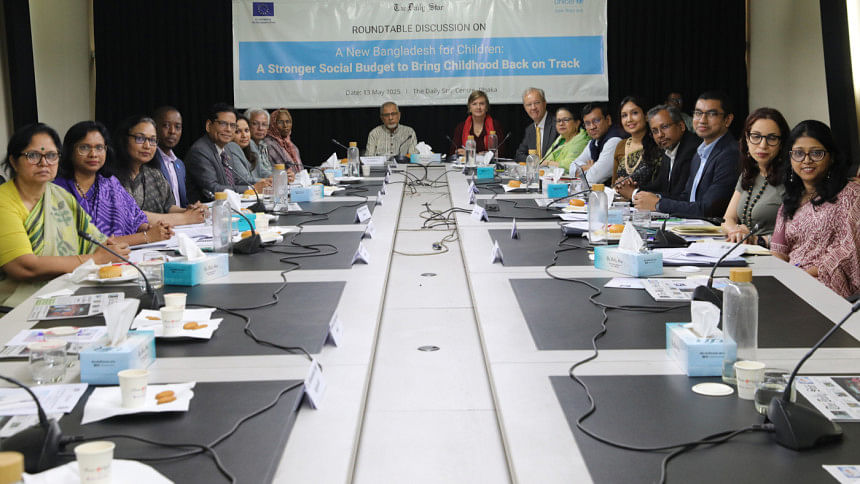
UNICEF, supported by the European Union and in partnership with The Daily Star, organized a roundtable on May 13, 2025, titled "A New Bangladesh for Children: A Stronger Social Budget to Bring Childhood Back on Track." The following is a summary of the discussion.
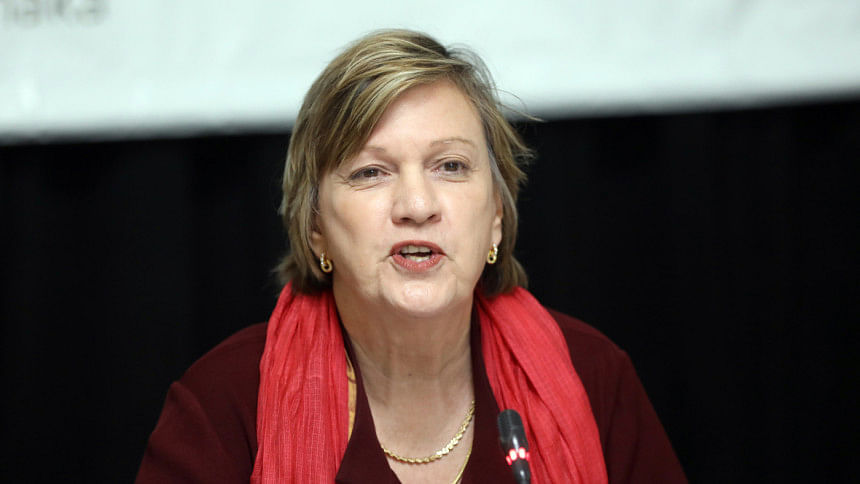
Rana Flowers, UNICEF Representative in Bangladesh
UNICEF works for children's rights across Bangladesh. Since arriving last August, I have been concerned by the focus on tax and bank reform while children's rights and social services remain neglected.
Bangladesh has one of the world's weakest education, health, and social welfare systems. Social protection is not just about cash transfers—it includes functioning social sectors. Yet in Bangladesh, both are neglected.
Investments in early childhood development yield long-term benefits in economic growth, yet remain underfunded. Health spending is only 0.7%, lower than in many African countries, with 40% of health centers lacking vaccinators.
Teacher quality is poor, and families pay out-of-pocket for ineffective tutoring. Last week alone, 27 children died as a result of domestic violence. Education is marked by poor outcomes and high dropout rates. Health, nutrition, and WASH are fragmented—seven government departments manage water alone. We urge integration and efficiency.
Budget processes are ad hoc, with no tracking of social sector spending, causing delays and inefficiencies.
Separate ministries for health/family planning and primary/secondary education reduce efficiency. Donor-driven projects often lack long-term planning. We need clear targets, strategic planning, and gender responsive budgeting. UNICEF is ready to support the budgeting process—helping to identify the evidence, shape the messaging, and finding the fiscal space needed for meaningful change.

Dr Michal KREJZA, Head of Development Cooperation, Delegation of the European Union to Bangladesh
The EU remains a key partner in Bangladesh's social sector, supporting two major budget operations: €285M for social protection and €245M for education and TVET, tied to reforms under the National Social Security Strategy (NSSS).
The education budget has stagnated at 12% for a decade and dropped to 1.69% of GDP in FY2025—below UNESCO's recommended 4–6%—despite education's role in economic growth. Focus must now shift to quality and digital integration, preparing students for both domestic and international job markets.
Budget transparency also needs improvement; for instance, investments in the Rooppur nuclear plant are categorised under education and technology in the budget, whereas in EU countries this would fall under energy.
According to initial newspaper reports, the social protection budget is expected to drop from 1,360 to 1,200 billion BDT—not necessarily a bad sign, as if it reflects a shift towards more targeted spending. Non-essential programmes are being cut to boost benefits for vulnerable groups, including the elderly, widows, persons with disabilities, children, and tea workers.
The mother and child benefit programme will expand to 1.77 million beneficiaries with a slight allowance increase, though still far from the NSSS target of 6 million by June 2026. The old age allowance expansion—from 6 million people in FY2024 to 6.1 million in the next budget—is also commendable.
Excluding savings certificate interest improves transparency. Civil servant pensions should be excluded from social protection, as they do not assist the poor and vulnerable. While targeting remains an issue, the finance division's single registry MIS is a positive step. As LDC graduation approaches, urgent reforms in revenue mobilisation and tax systems are essential. The EU will continue to support this transition.

Md Ashiq Iqbal, Social Policy & Economic Specialist, UNICEF (Keynote Presentation)
With the upcoming budget, it's crucial to reflect on recent trends in social sector investments and future priorities. Investing in human capital is vital now, as we navigate a shrinking demographic window, which will close around 2033. After that, general population growth will outpace workforce population growth, meaning we will be moving towards an ageing society.
For instance, in 2020, 13 working-age people supported one elderly person; by 2040, only six will. Today's children will bear this burden, needing to be twice as productive. Hence, urgent investment in their development is essential. Let us now examine our recent investments in this area, starting with education.
Enrolment has improved at both primary and secondary levels, with gender parity achieved and dropout rates reduced—especially for girls. However, many adolescents remain excluded, and quality is a growing concern.
In Grade Five, 70% failed to meet expected grade-level competencies in Bangla and mathematics. While global goals recommend allocating 4–6% of GDP (approximately 20% of the budget), we allocate only 1.7%, and spend just 1.4%.
When resource constraints arose in the past, education was still prioritised during implementation. However, in recent years, this trend has reversed—education is now deprioritised both in allocation and in spending. Alarmingly, only 4.5% of the education budget goes to quality areas such as teacher training, ICT, and innovation. Around 50% of the development budget remains unutilised. Foreign financing often crowds out domestic investment.
In health, while progress was made in maternal and under-five mortality reduction and immunisation, challenges remain—along with HR shortages, governance and financial management issues. Out-of-pocket expenditure remains as high as 70%, indicating heavy reliance on the unregulated private sector.
Health allocation is only 0.7% of GDP and 5.2% of the budget (FY25), whereas global standards are 5% of GDP and 15% of the budget. Actual health spending (FY23) is only 0.5% of GDP and 3.9% of total public expenditure.
Despite already low allocations, almost half of the health development budget remains unspent—only 5% was utilised in the first three quarters of FY25 by the health ministry. This trend is worsening.
Additionally, with LDC graduation ahead, grant support is declining while interest payments on foreign loans—now exceeding combined health and education spending—are surging. Over the last 15 years, 41% of health and 23% of education development budgets were foreign-financed. Strengthening domestic financing is crucial to prepare for the coming challenges.
In social protection, despite improved coverage, major challenges persist—weak coordination, low transfer values, and lack of service linkages—though investment remains reasonable at 2.4% of GDP.
However, this allocation includes pensions, interest on savings certificates, and agricultural subsidies—many argue these are not true social protection. Excluding them, the figure is just 1.3%. Children, who make up 33% of the population, receive only 8% of the support.
It is also a major accountability issue that no social protection expenditure data is published.
Turning to other sectors, emergency preparedness requires an estimated $8.5 billion annually; however, only $3.6 billion is allocated, despite Bangladesh's considerable vulnerability to disasters.
Regionally and globally, Bangladesh ranks towards the bottom in health, education, and social protection spending, according to World Bank data.
To conclude, we propose key investment priorities for the upcoming budget. In health, we must progressively move towards 2% of GDP, focusing on primary health care. Budget codes should enable tracking, and vaccine stock-outs by June 2025 must be averted.
The education budget needs to prioritise quality through foundational learning, teacher development, and climate-resilient infrastructure. In social protection, the Mother and Child Benefit Programme should expand to cover 50% of pregnant women, including adolescent mothers. The monthly benefit should be adjusted from BDT 800 to BDT 1,200 to counter the impact of inflation.
Social protection must strengthen its focus on children, urban needs, and climate. We need at least 10,000 social workers in the short term (currently the number is around 3,500), out of the 100,000 required. A separate court with virtual trial facilities should be established for children. A minimal budget could expand virtual courts nationwide.
In WASH, better coordination and dedicated budget codes are critical. Disaster funds lack local access and flexible provisions. Children must be prioritised in disaster responses. Ultimately, while higher allocations are vital, real impact depends on understanding and addressing persistent challenges in fund utilisation and implementation across sectors.
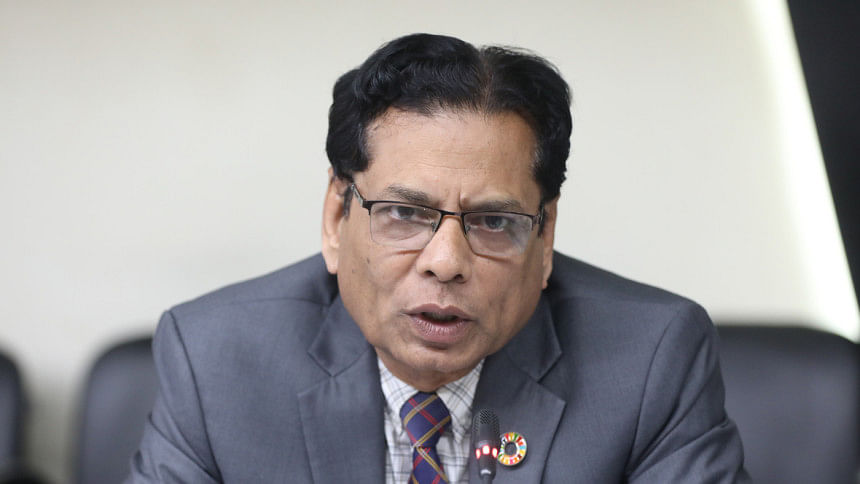
Prof Mustafizur Rahman, Distinguished Fellow, Centre for Policy Dialogue (CPD)
To raise education and health spending from 2% to 5% and from 1% to 3% of GDP respectively, we must ask: where will the additional 5–6% come from? Since the total GDP allocation is fixed at 100%, increasing one sector's share means reducing another's—a political trade-off often overlooked. An alternative is to expand the overall budget by increasing the revenue-to-GDP ratio.
Doubling it from 8% to 16% of GDP would increase actual education spending even if the GDP share remains at 2%. Thus, the challenge lies in restructuring the budget and boosting domestic resource mobilisation.
Social safety nets also show imbalance: 34% coverage in rural areas versus just 9% among the urban poor. Initiatives like midday meals, with their positive effects on nutrition, school attendance, and gender outcomes, should be scaled up to address such gaps.
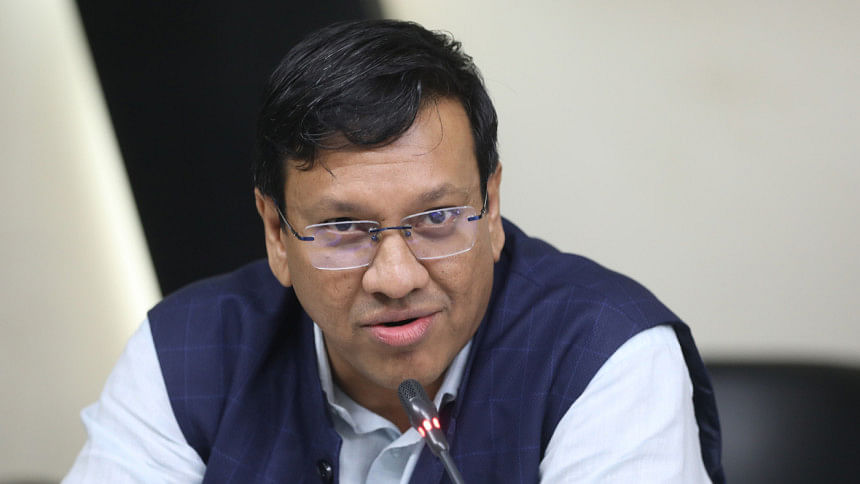
Towfiqul Islam Khan, Senior Research Fellow, Centre for Policy Dialogue (CPD)
Resource constraint is often cited as the primary reason for not allocating incremental resources to the social sectors. The social sectors received only half of the planned ADP allocation compared to the planned ADP allocation in the 8FYP. In contrast, infrastructure related sectors received 20,000 crore taka more.
So why does this happen? It often comes down to who benefits from these services. Marginalized communities rely on public schools and hospitals, while the wealthier, ruling class typically do not. They tend to send their children to private schools and seek healthcare from private providers. However, everyone, regardless of wealth, uses public infrastructure like roads and bridges. This creates a bias in the allocation of funds towards physical infrastructure instead of social services. Unfortunately, discussions about how public resources are distributed often overlook this issue, especially when it comes to elite capture of budget decisions.
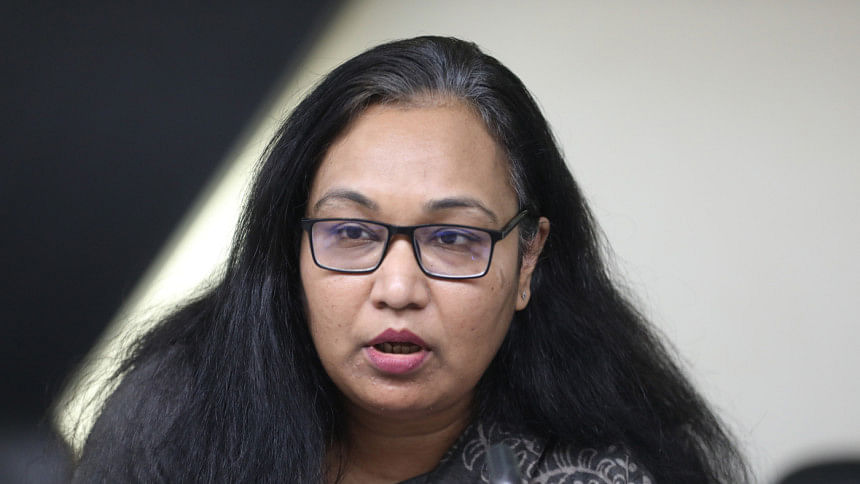
Prof Dr Rumana Huque, Department of Economics, Faculty of Social Sciences, Dhaka University
I want to emphasise the efficient use of resources in health, education, and social safety nets. Currently, our budgeting follows an incremental, cost-centre-based model without considering population or catchment area needs. This must shift to a needs-based approach, such as district budgeting and increased coordination between the operating and development budgets.
We should adopt a life-course perspective—investing early through integrated school health programmes, including screenings, meals, and mental health services. Coordination must move beyond paper, with joint budgeting across ministries. Urban areas, especially slums, need targeted investment, as existing systems focus on rural contexts.
Lastly, public expenditure tracking is crucial across all sectors. Linking inputs to outputs through integrated budgeting can enhance efficiency and help monitor real impact.

Nishath Sultana, Director – Influencing, Campaign and Communication, Plan International, Bangladesh
Bringing childhood back on track is crucial because it signals that something has gone missing. It was noted earlier that children are the future, but I believe they are also the present, and we must act now.
Despite progress in girls' primary and secondary education, nearly 50% drop out before Grade 10—mainly due to child marriage, which remains at 51%. The Child Marriage Restraint Act 2017 and its National Plan of Action exist, but coordination and monitoring are weak.
We must also tackle rising violence against women and girls. Domestic violence affects nearly 70% of women in Bangladesh. In public spaces, especially on transport, the problem is even more acute: 94% of women report routine sexual harassment, and 80% of women do not feel safe in the city.
Given this situation, it is crucial to invest in redefining gender norms through education and institutional reform.
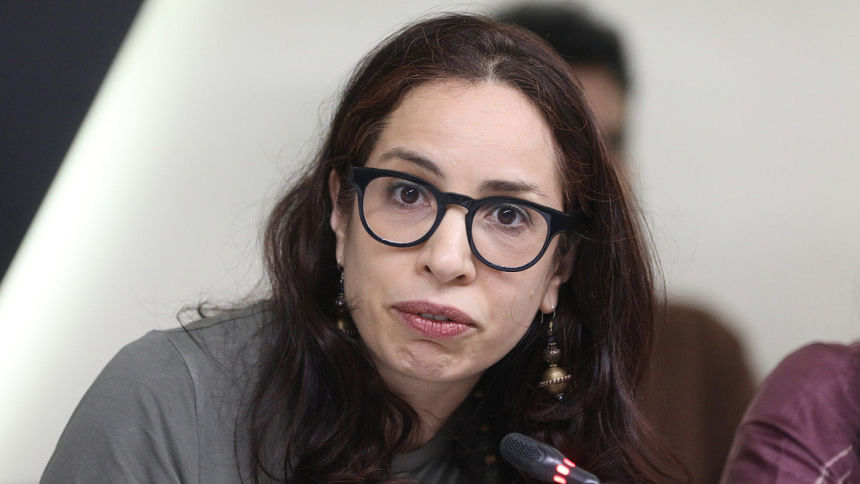
Iole Valentina Lucchese, Programme Manager, Social Protection, Delegation of the European Union to Bangladesh
While I fully agree with the need for better targeting, integration, and more efficient spending, I want to highlight one crucial aspect that has not been addressed—social insurance. If we are to identify sustainable financing mechanisms that ease pressure on the government budget, we must consider piloting and eventually institutionalising social insurance schemes.
For instance, Bangladesh currently has a pilot Employment Injury Scheme, but the government should move forward with a clear vision for social insurance, including maternity social insurance.
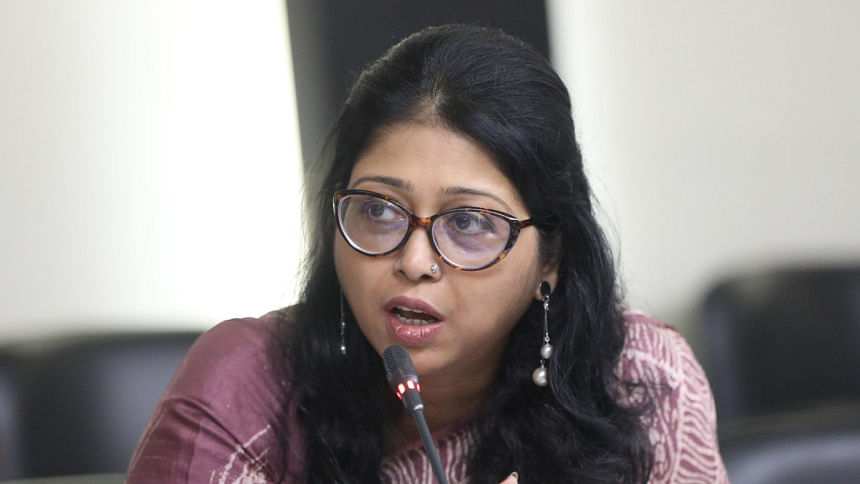
Kishower Amin, Programme Manager, Public Financial Management (PFM), Delegation of the European Union to Bangladesh
While increased allocation for social sectors is important, during our budget support policy dialogues, the government often raises a valid concern: what about budget utilisation? As reflected in the presentation, utilisation rates remain low.
A key reason is the lack of credible budget planning. Ministries often struggle with both data availability and analysis, limiting their ability to plan effectively. Capacity building in this area is essential.
Additionally, budget planning must better reflect sectoral policies, which currently contributes to underutilisation. Another issue is inaccurate project costing, which results in inefficient implementation.
Therefore, we must place greater emphasis on strengthening project preparation processes to ensure both effective allocation and utilisation of resources.
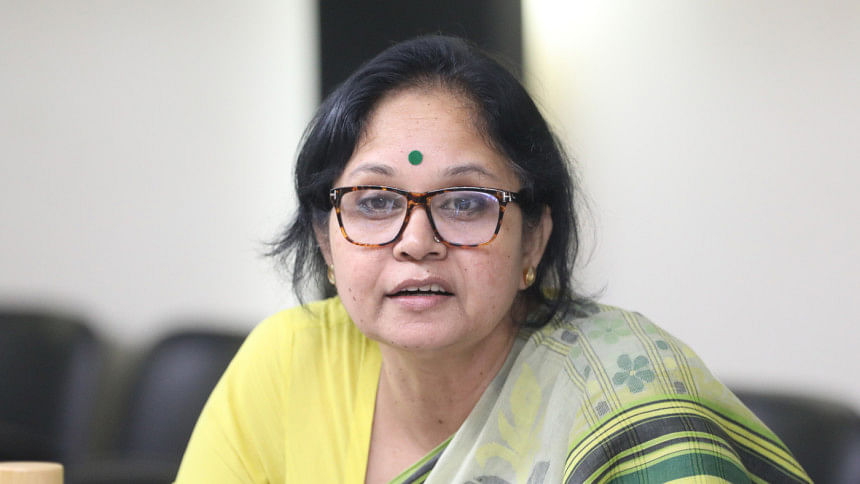
Sharmind Neelormi, Professor, Department of Economics, Jahangirnagar University
I would like to raise key points on how children are positioned within social policy. Beyond education and health, we must address rising challenges such as kishore (teen) gangs, drug abuse, and risky adolescent leisure—signs of systemic neglect.
Structural reforms are essential. Teachers' salaries remain extremely low, undermining motivation and quality. The NCTB must operate independently, free from political interference. Its content and structure should reflect long-term national priorities—not short-term political considerations.
Childcare access is dire—only 61 public and 100 private daycare centres exist in Bangladesh. Even affluent families struggle.
Public–private coordination is essential to expand access and support early development. Additionally, while the Finance Ministry's allocation tracking aims for transparency, it often adds complexity without improving inter-ministerial coordination. To create a truly inclusive, child-sensitive policy environment, we must address these structural and cross-cutting issues with urgency, clarity, and coherence.

Stanley Gwavuya, Chief, Social Policy, UNICEF
We are observing that almost 50% of the allocated budget remains unutilised. We must investigate the causes, identify the bottlenecks, and address them—unlocking these funds could significantly enhance impact. I believe we have the means to begin this process.
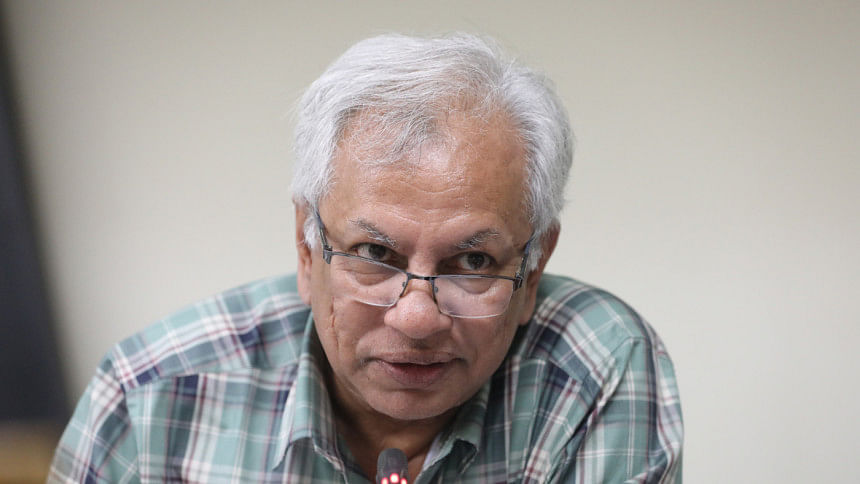
Prof Dr A K Enamul Haque, Director General, Bangladesh Institute of Development Studies (BIDS)
We are focusing too narrowly on budget allocations, overlooking inefficiencies and accountability gaps that undermine impact. Simply increasing spending—on infrastructure, health, or overall—will not yield results without systemic reform.
For example, private hospitals enjoy tax exemptions from donors and the state but must also be held accountable for serving the poor.
Public education faces a similar crisis. Some Dhaka schools have virtually no students, as even slum families turn to low-cost private schools. This reflects a serious policy gap.
Notably, our family planning success was donor-led,showing that aligning priorities with effective delivery matters more than just increasing budgets.
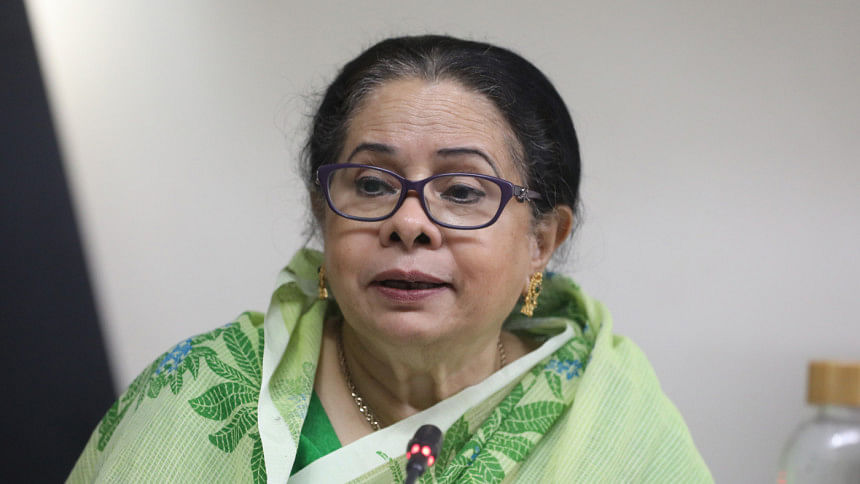
Rasheda K. Choudhury, Executive Director, Campaign for Popular Education (CAMPE)
We must begin by tracking budget flows in critical sectors, particularly in terms of how resources are actually utilised on the ground. Without this, increased funding alone will not create meaningful change.
You may be surprised to learn that Bangladesh is among the top five countries for child deaths due to drowning—most of these tragic incidents involve pre-primary-aged children. Even though we motivated the Ministry of Women and Children Affairs (MoWCA) to develop a project to address this, the utilisation rate is extremely low.
Similarly, the Bureau of Non-Formal Education presents a grim outlook: many interventions fail to sustain impact because, once a project ends, underprivileged children often disappear from the system entirely.
We also urge support for reforms such as establishing self-help desks at police stations—highlighted in the Police Reform Commission report—and improving WASH facilities in disaster-prone areas. During floods, adolescent girls were forced to take menstrual-suppression pills due to inadequate sanitation. Some NGOs have developed mobile toilets, yet such innovations go unsupported.
We ask development partners to fund civil society, especially in research and advocacy. Unlike microfinance NGOs, we need resources to push systemic change. Grants for education and health research are virtually non-existent, unlike those for agriculture, which have shown great returns.
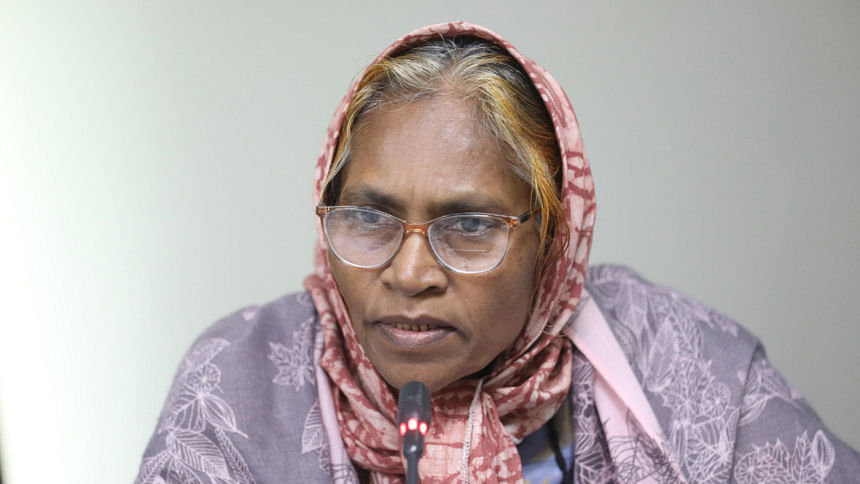
Mamtaz Ahmed NDC, Senior Secretary, Ministry of Women and Children Affairs
We implement decisions made by the government, and I currently oversee two major programmes: the Mother and Child Benefit Programme (MCBP) and the Vulnerable Group Development (VGD) programme—both of which require increased government funding. Under MCBP, the current benefit of BDT 800 is inadequate given inflation, necessitating a higher allocation. In the VGD programme, we distribute 30 kg of rice to women or mothers, but additional funds are needed to both expand coverage and increase support.
I would also like to highlight the ICBC project, which provides safe swimming facilities for children and is funded by Bloomberg International (New York) and the Royal National Lifeboat Institution (UK). Despite excellent outcomes, it operates in only 7 out of 64 districts and covers just 64 out of 4,945 upazilas. Scaling it up is critical.
Finally, I urge the government and development partners to urgently address the ongoing violence against women and children, which remains a pressing concern.
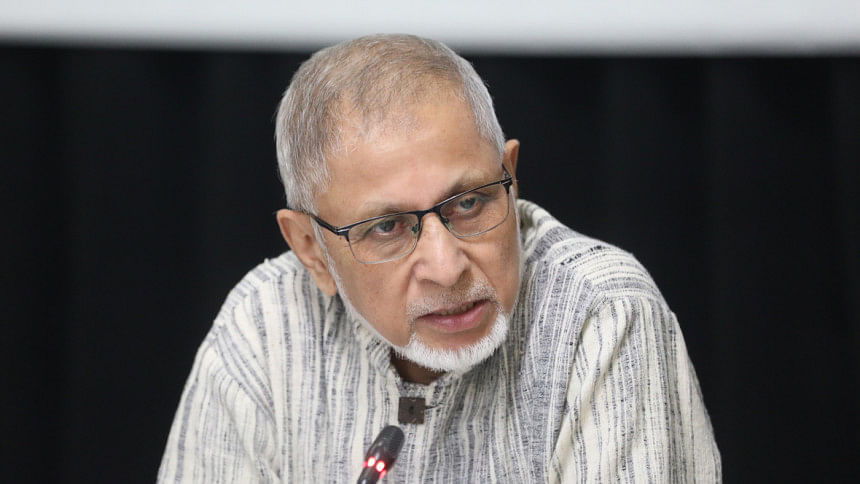
Dr. Anisuzzaman Chowdhury, Special Assistant (Ministry of Finance, GoB)
Understanding history is key—budgets evolve gradually, and abruptly halting projects causes major disruption. That's the nature of policy-making. This is why such discussions should begin earlier in the year, before budgets are finalised. Not every suggestion will be accepted, but starting early improves impact.
The core issues—investment in children, education, and health—are not new. We all agree they are essential. The real challenge lies in political economy: who makes decisions, and whose interests shape the system?
We discussed domestic resource mobilisation. Afghanistan is a cautionary tale: once donors left, its budget collapsed. Aid dependency is dangerous. In 1967, the late Prof. Anisur Rahman argued that aid often replaces rather than supplements domestic effort, eroding self-reliance.
Bangladesh exemplifies this. The tax-to-GDP ratio has declined from 11% in the early 2010s to 6–7% today, while aid reliance has increased. True progress demands correcting this imbalance. We are not short on financial or human capital—billions leave the country while capable professionals remain underutilised. What we lack is social capital: the trust and collective spirit that hold society together.
We have weakened this by eroding democratic institutions. Democracy is the only peaceful way to resolve conflict and build consensus. To move forward, we must rebuild social capital through unity, inclusive dialogue, and protection of civic spaces.
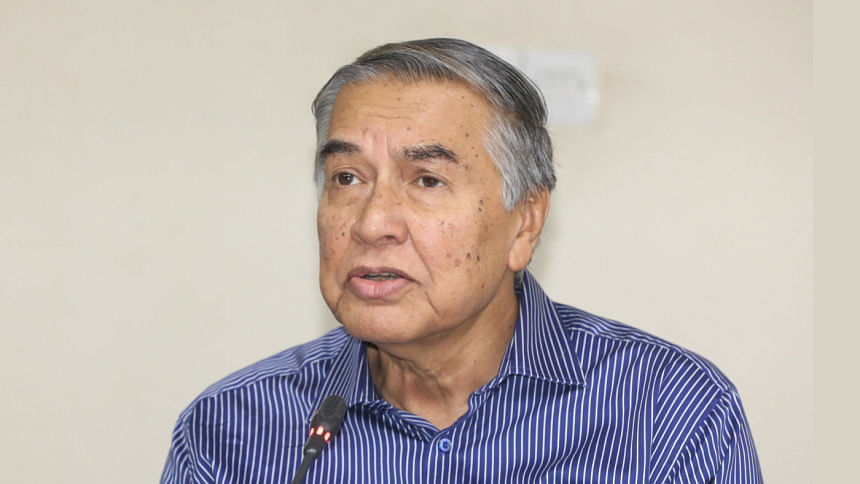
Mahfuz Anam, Editor and Publisher, The Daily Star
We are committed to prioritising the social sector, especially education and children's issues, as part of our editorial policy. In general, all of us are very conscious of the fact that children are the future of every nation, yet historically we have not given it sufficient importance. To put it very concretely, we are conscious of the fact that our investment in the social sectors, in education, and on children's affairs, is far below the global standard.
Even that inadequate level of investment is plagued by two persistent issues: corruption and misallocation. After 54 years as an independent nation, it is imperative that we reassess our priorities and enhance the efficiency of resource use.
This dialogue must continue beyond today. We'll report, editorialise, and publish op-eds on this vital topic. I encourage all of you to share your ideas through op-eds—so the conversation carries on meaningfully.
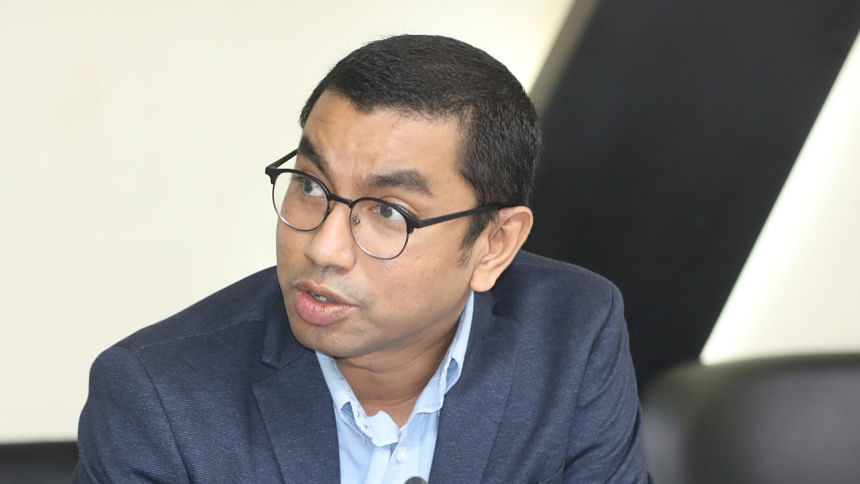
Tanjim Ferdous, In-Charge, NGOs & Foreign Missions, The Daily Star
Despite progress, investment in education, health, and social protection remains far below global standards—threatening the future of an entire generation. Our goal is simple yet powerful: to listen, exchange ideas, and build consciousness around a stronger, more equitable social budget—one that truly brings childhood back on track.
Recommendations
- The education budget should prioritise quality through foundational learning, teacher development, and climate-resilient infrastructure.
- Health allocation must progressively move towards 2% of GDP, focusing on primary health care.
- Public expenditure tracking is a must across all sectors.
- Instead of an incremental, cost-centre-based model, budgeting should shift to a needs-based approach, prioritising public needs.
- Social protection expenditure data needs to be published publicly to ensure accountability.
- Budget allocation should be increased for the Mother and Child Benefit Programme (MCBP) and the Vulnerable Group Development (VGD) Programme. The MCBP should target to progressively cover 50% of pregnant women, including adolescent mothers, while increasing the monthly benefit from BDT 800 to BDT 1,200 to offset inflation.
- The NCTB must operate independently, designing curricula that reflect long-term national priorities—not short-term political interests.
- Domestic financing needs to be strengthened, shifting reliance away from foreign aid.
- Allocation for emergency preparedness should be expanded, prioritising children in disaster responses.
- Establishment of separate courts with virtual trial facilities for children should be targeted.

 For all latest news, follow The Daily Star's Google News channel.
For all latest news, follow The Daily Star's Google News channel. 


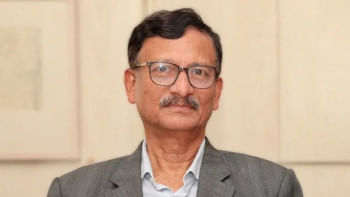
Comments